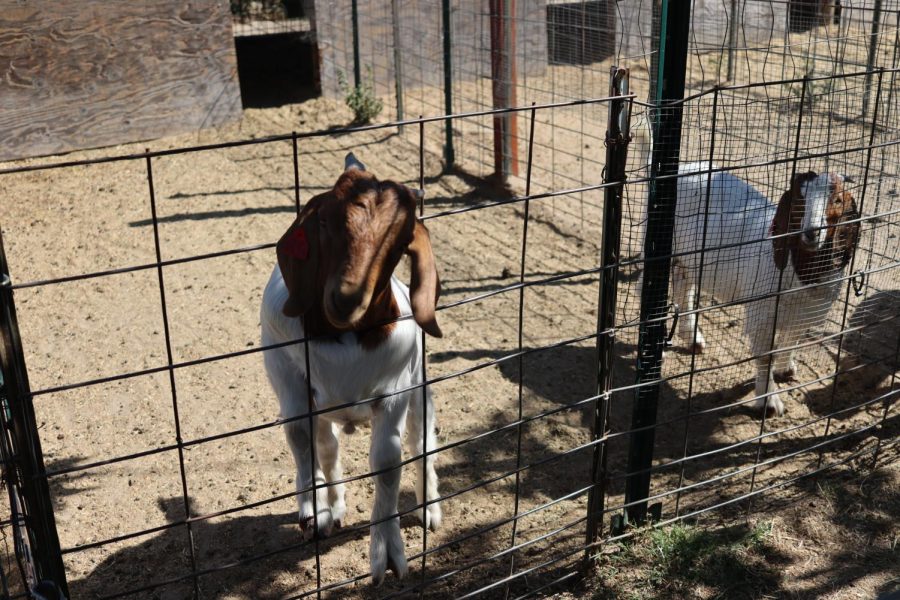Students learn Responsibility Down at the School Farm
May 3, 2022
Hughson had a great peach farm back in its day. We were the main peach supplier for the state of California, and gradually turned into an almond farm and still is to this day. Now Hughson High School also has its students raise animals to teach the students the ways of the animal, and get an agricultural experience.
As a teacher, Mrs. Larson must help guide the students in animal raising. Some advice she would give to a beginner would be, “Be ready for a huge time commitment. Students are required to devote at least an hour each day to providing the care for their animal. Also, don’t be afraid to ask questions.” Mrs. Larson will commonly help students with some common problems such as getting the proper nutritional needs for the animal. Larson goes on to say, “As an animal grows and develops, the nutritional needs change and feeding adjustments need to be made.” With solutions to this problem, she provides the students with some wisdom, making sure the student can learn. “We provide students with advice on all aspects of raising the animal. We also assist in weighing animals to make feed changes, showmanship practices, and a farm in which they can utilize to raise the animal.” Larson states that some benefits to raising an animal can not only present a business opportunity, but also “life lessons in responsibility.” Mrs. Larson continues to state, “Students become responsible for simple life operations such as feeding daily, conducting health checks, treatment of illness, and providing clean facilities. These are all skills they will need in life for themselves, as well as learning the lesson of responsibility which is vital in any career field. The purpose of raising an animal is for students to learn and develop skills in animal selection, nutrition, grooming, and daily care of the animal. In all agricultural classes, students are expected to maintain a supervised agricultural experience, in which raising an animal can meet the requirements.”
From Mrs. Schmidig’s point of view as an agricultural teacher at Hughson High, “The main purpose of raising a market animal is for the students to raise it to meet market standards with the end goal of meat production.” One major benefit of raising an animal is for students to earn responsibility. Mrs. Schmidig states, “Students are the main caregiver for the market animal because they have to feed it, groom it, prepare it for the show, maintain the overall health of the animal and then earn a profit at the end of the project. If a student does not care for it correctly, it can affect how much money they make as well as the health and well being of the animal. For example, if the animal is not fed properly and does not meet the weight requirements, then it cannot be shown at the stanislaus fair. Like I said before, learning responsibility is a major benefit to the project.” Mrs. Schmidig later states, “A student may need help with feed rations and maintaining the overall health of the market animal, and this can be tricky to maintain because the animal must be kept on a strict feeding schedule. Ag teachers are constantly providing guidance on how to correctly feed the animal. Sometimes the animal can have a health concern and we can provide the student with guidance, advice, and a few recommendations on what to do.” Mrs. Schmidig’s tips to a beginner would be to ask a lot of questions and trust in your Ag teacher’s recommendations. “If it is a new experience to a student, they will have numerous questions and I would encourage those students to ask them and learn as much as possible!” Mrs. Schmidig finishes by saying, “As a beginner, make sure you are listening to what you are being told and have an “eager to learn” attitude.”



